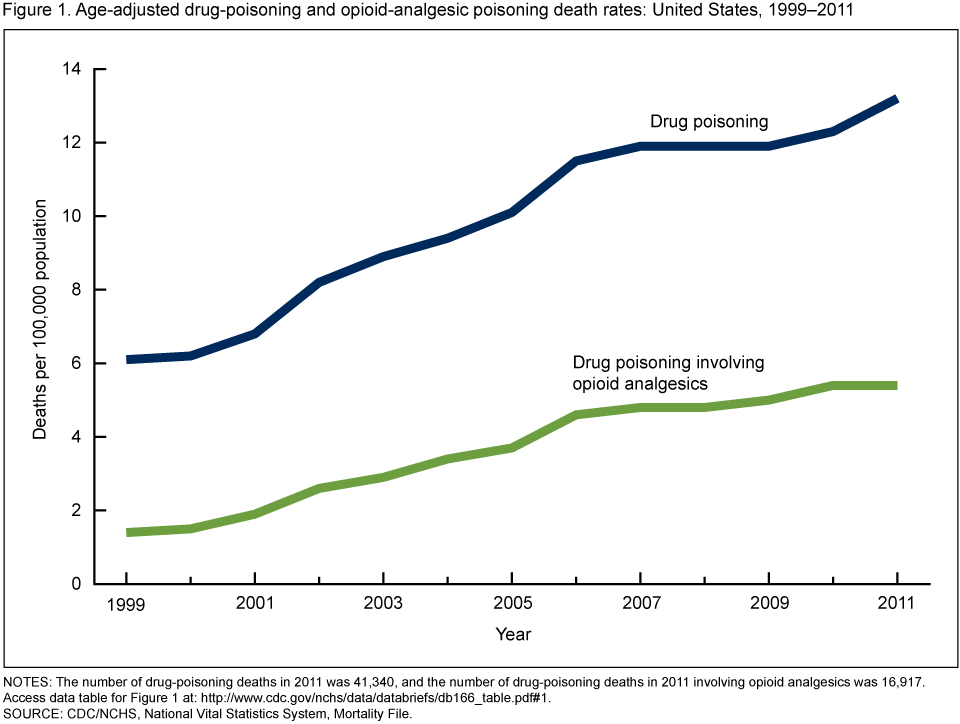Drug-poisoning Deaths Involving Opioid Analgesics: United States, 1999–2011
Posted on byPoisoning is the leading cause of injury death in the United States. Drugs—both illicit and pharmaceutical—are the major cause of poisoning deaths, accounting for 90% of poisoning deaths in 2011. Misuse or abuse of prescription drugs, including opioid-analgesic pain relievers, is responsible for much of the recent increase in drug-poisoning deaths.
A new report highlights trends in drug-poisoning deaths involving opioid analgesics (referred to as opioid-analgesic poisoning deaths) and updates previous Data Briefs on this topic.
Key Findings from the Report:
- The age-adjusted rate for opioid-analgesic poisoning deaths nearly quadrupled from 1.4 per 100,000 in 1999 to 5.4 per 100,000 in 2011.
- Although the opioid-analgesic poisoning death rates increased each year from 1999 through 2011, the rate of increase has slowed since 2006.
- Natural and semisynthetic opioid analgesics, such as hydrocodone, morphine, and oxycodone, were involved in 11,693 drug-poisoning deaths in 2011, up from 2,749 deaths in 1999.
- Benzodiazepines were involved in 31% of the opioid-analgesic poisoning deaths in 2011, up from 13% of the opioid-analgesic poisoning deaths in 1999.
- During the past decade, adults aged 55–64 and non-Hispanic white persons experienced the greatest increase in the rates of opioid-analgesic poisoning deaths.
Categories Deaths
Page last reviewed: September 16, 2014
Page last updated: September 16, 2014
Content source:
CDC, National Center for Health Statistics
